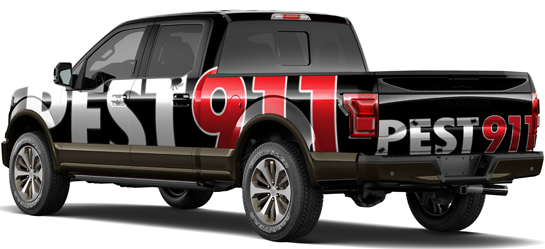What Attracts Carpenter Bees & How to Get Rid of these Flying Insects in Ocala, FL
Florida is home to many bees. Being more or less beneficial, bees can still pose a threat to your health, particularly to those that have an allergy, but some can even do property damage. Among the bees in Florida are Carpenter Bees and they can be highly destructive to property throughout Florida. At this time, we at Pest 911 would like to take an opportunity to share some of the basics concerning carpenter bees.
Carpenter Bee Identification
The large carpenter bees (Xylocopa) are the likely offenders of property damage of Florida structures, but there are two classifications; Xylocopa and Ceratina, which are small carpenter bees. Where their size and characteristics greatly resembles the bumble bee, carpenter bees vary in size, averaging just under a ½” to 1” in length. The coloring on carpenter bees differs and the assortment includes greenish black, black, purplish blue, and metallic blue and the males will feature yellow sections on their face. Though it is not near as dense or as vibrant as the bumble bees, carpenter bees have visible hair on the top abdomen, they do have yellowish hairs on the legs, thorax, and abdomen.
Carpenter Bee Damage
Commonly attracted to the unfinished or weathered wood, black and yellow carpenter bees only excavate tunnels within the wood to use as nests but do not eat the wood. Generally, these bees are found destroying siding, fascia boards, eaves, decks, and porches, but they are discovered in other such places. Come the spring they emerge from their refuges in the wood where they hunker down during the winter months. Carpenter bees typically continue to expand their tunnels and even find new nearby places to excavate if their progress is halted. The damage with their excavation work can be costly and their feces can cause unsightly staining, though they are otherwise relatively harmless.
Carpenter Bee Stings
For most, their sudden appearance from the wooden cavities can be a bit startling. The females do have stingers, but rarely sting and only do when they are provoked. Males do not possess a stinger, but when they feel threatened they will try to appear more aggressive with their flight movement.
Signs of Carpenter Bees
A larger infestation is fairly obvious, as you can typically see them flying protectively over their nests. However, in fewer numbers, when it is better to take care of the problem, seeing the signs can save you from excessive damage. The red flags include:
1) Excavated holes approximately a ½” wide in the wood.
2) Around the hole or ground, there is sawdust.
3) Near the entrances to the holes, feces, fecal stains and pollen can be found.
What Attracts Carpenter Bees?
The rails and posts of the split rail fences made of oak are a particular attraction to carpenter bees and they also favor redwood, pine, and Cyprus. Old and weathered wood is fair game to carpenter bees as well as any wood that is unprotected by bark, unpainted or unfinished is also vulnerable to carpenter bees.
Carpenter Bee Inspection
If you see carpenter bees flying around or believe you may have an infestation, check the following in addition to the fascia boards, siding, eaves, decks, and porches:
– Doors
– Windowsills
– Wooden Lawn Furniture
– Fences
– Railings
– Untreated Poles
Carpenter Bee Removal
Carpenter bee removal requires the expertise of Pest 911 professionals, if you have them call us today and let our technicians do the rest!


